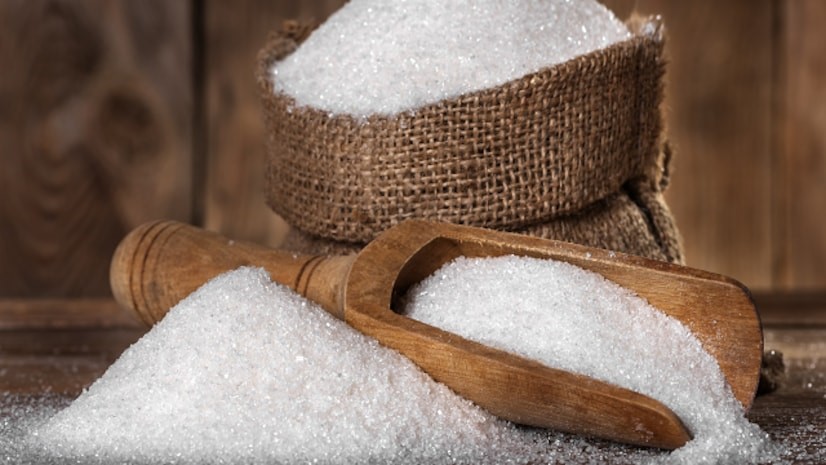Bittersweet: India Faces Export Constraints

The El Nino played spoilsport once again. It raised the spectre of a shortfall in sugar output, with 221 districts covering 31 per cent of the country receiving below-average rainfall this monsoon. Inadequate moisture during crucial growth phases led to diminished yields and stunted crop development, especially across Maharashtra and Karnataka, posing a major concern for domestic sugar industry.
As per industry estimates, an 8 per cent shortfall in sugar output is likely during the current sugar season (October 2023-September 2024) over the last season. Karnataka, a major sugarcane producer, faces a 30 per cent decline in output this season due to insufficient rains. Neighbouring Maharashtra, too, anticipates a 10-20 per cent fall in cane production on account of erratic rainfall. At the same time, though, production in Uttar Pradesh remains on track for the current season (October 2023-September 2024). In fact, Uttar Pradesh anticipates an 8 per cent production boost.
The Indian Sugar Mills Association (ISMA), the premier lobby of mill owners in the country, estimates the total area under sugarcane production to be 57 lakh hectares, and sees production of 33.7 million tonnes of sugar in the 2023-24 season. It predicts ample domestic sugar supply, surpassing the average consumption of 27.8 million tonnes.
The last season yielded 36.9 million tonnes, and the current year commenced with a 6.5 million tonne stock, reflecting dynamic shifts in India’s sugar production landscape.
In the sugar season that concluded on September 30, India limited sugar exports to 6.2 million tonnes, a notable reduction from the record 11.1 million tonnes permitted during the 2021-22 period. For the current season, there is a continued ban on sugar exports.
Impact Of Export Curb
“If the export curbs were to continue, integrated players might not be that impacted due to their diversified revenue streams. However, operating profitability of non-integrated millers may get impacted as they will lose out on firm international sugar prices, as these millers depend primarily on sale of sugar and do not have distillery plants,” says Anuj Sethi, Senior Director at CRISIL Ratings & a sugar industry expert.
Asked if there will be an increased diversion of sugarcane for ethanol blending in view of curbs on sugar exports continuing, Sethi says that if one assumes that overall cane and hence the sugar production will remain stable, then in such a scenario higher diversion for ethanol blending would mean export of sugar declining as the export quota is announced only after ensuring that sufficient carry-over stock of sugar is maintained for domestic consumption throughout the year. “The industry witnessed similar situation in the last sugar season wherein sugar exports dropped to 6.1 million tonnes as higher quantum of sugar got diverted to meet the ethanol blending targets,” adds Sethi. Of course, the government had ensured that 2.5-3 months of sugar stock were maintained.
Will the continued ban on sugar exports impact foreign exchange earnings? Ravleen Sethi, Associate Director, CareEdge says, “There will definitely be a forex loss as India exported 6 million tonnes of sugar in the last sugar season and 11 million tonnes in the season before that.” Will it impact the sugar exporters adversely? “There is no significant downside of export curbs to the players,” adds Sethi. Placing curbs on exports have now arrested any windfall gains in the price increase in the domestic market, she adds.
Geared Up For Challenge
Aware of the challenges, leading sugar manufacturers have been diversifying to hedge any potential downside due to lower yields by maximising the returns from sugar, value-added products and increased ethanol output.
Triveni Engineering (TEIL), one of the leading integrated players, has already planned on the conversion of more plants to refineries and the expansion of pharmaceutical-grade sugar capacity to enhance profitability. In an interaction with BW BusinessWorld, Tarun Sawhney, Vice Chairman & Managing Director, TEIL said: “We are committed to increasing our sugarcane crushing capacity and have received approval for a 2,000 tonne of cane per day (TCD) expansion at our Sabitgarh unit, raising the overall crushing capacity of Triveni to 63,000 TCD.”
Triveni Engineering is working in line with the government’s agenda of achieving 20 per cent ethanol blending target by 2025. “We are strategically expanding our distillation capacity from 660 kilo litres per day (KLPD) to 1,110 KLPD. Our board has already approved a capex of Rs 460 crore for the two new plants in Rani Nangal and Sabitgarh. We expect the Rani Nangal distillery to be commissioned in Q4 of this fiscal year,” said Sawhney.
Another leading player, Balrampur Chini Mills (BCML), one of the largest integrated sugar companies in India with 10 sugar factories in Uttar Pradesh, is preparing for an expected upswing in its own production volumes. This is due to ongoing collaboration with the farming community, says Vivek Saraogi, Chairman and MD, BCML. “Our field teams have been intensively engaging with farmers to bolster the quality of cane, as well as to increase acreage and yields. These concerted efforts should lead to a projected ~10 per cent increase in sugarcane crushing this season,” he adds.
At the time of filing this report the oil marketing companies were yet to announce the revision in ethanol price for FY24 in line with the increase in fair & remunerative price (FRP) of sugarcane (from Rs 2,900 to Rs 3,050 per tonne). In its post-quarterly results call, S. Suresh, MD, E.I.D.- Parry (India), a leading sugar manufacturer from southern India said he was hopeful that the government would favourably consider an upward revision of ethanol price to partly compensate for the FRP increase which has already happened. The sugar industry has already called for an increase in the price of ethanol by Rs 4 per litre to Rs 69.85 along with a long-term policy and formula for ethanol pricing. The industry believes these steps will encourage mill expansion and achieve 20 per cent blending in petrol by 2025.
Any Upside?
Sethi of CareEdge maintains that despite an 8-10 per cent dip in production, the overall sugar consumption is expected to hold steady or slightly increase, reaching 28-28.5 million tonnes, resulting in around 7 million tonnes of sugar inventory. Limited ethanol diversion is anticipated due to stable sugar prices, with the diversion likely to hover around 4 million tonnes, says Sethi.
Experts add that amid global and domestic production challenges, sugar prices are projected to remain robust. Global production is forecast at 176.5-177.0 MMT, similar to last year but with higher production in Brazil and lower production from India, Thailand, and Russia.
However, for domestic market persistent concerns include price regulations, an unpredictable sugarcane market, and water scarcity in some regions. Despite hurdles, experts say the sugar industry has learned to adapt to evolving conditions, aided by ongoing government initiatives. And this is the bitter-sweet truth of the sugar business.
Source Link :- https://www.businessworld.in/article/Bittersweet-India-Faces-Export-Constraints/20-12-2023-502897/

















